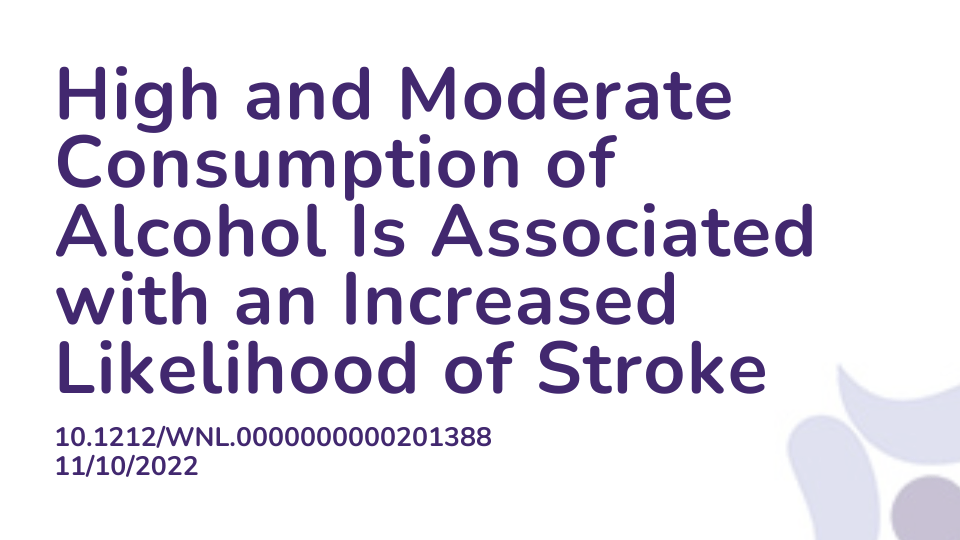Summary:
This worldwide study looked at the alcohol consumption of over 25,000 people from various ethnic backgrounds and 27 countries. It aimed to assess whether low, moderate and high consumption of alcohol contributed to the odds of having a stroke. Low alcohol consumption was defined as 1-7 drinks per week, moderate was classified as 7-14 per week for females and 7-21 for males, and high consumption was classified as greater than 14 per week for females and 21 for males. The results showed that low alcohol intake was not associated with an increased risk of stroke when looking at all the results collectively, but there were locational differences such as reduced odds of stroke amongst low consumption drinkers in Western Europe and North America and increased odds in India. Wine consumption was also associated with reduced likelihood of all types of stroke but not hemorrhagic stroke. Moderate to high consumption of alcohol was associated with higher odds of stroke.
Abstract:
Background and objectives: There is uncertainty about the association between alcohol consumption and stroke, particularly for low-moderate intake. We explored these associations in a large international study. Methods: INTERSTROKE, a case-control study, is the largest international study of risk factors for acute stroke. Alcohol consumption was self-reported and categorised by drinks/week as low (1-7), moderate (7-14 for females, 7-21 for males) or high (>14 for females, >21 for males). Heavy episodic drinking (HED) was defined as >5 drinks on ≥1 day per month. Multivariable conditional logistic regression was used to determine associations. Results: We included 12,913 cases and 12,935 controls; 25.0% (n=6,449) were current drinkers, 16.7% (n=4,318) former and 58.3% (n=15,076) never drinkers. Current drinkers were younger, male, smokers, active and with higher-paid occupations. Current drinking was associated with all stroke (OR 1.14; 95% CI 1.04-1.26) and intracerebral hemorrhage (ICH) (OR 1.50, 95% CI 1.21-1.84) but not ischaemic stroke (OR 1.06; 95% CI 0.95-1.19). HED pattern was associated with all stroke (OR 1.39; 95% CI 1.21-1.59), ischaemic stroke (OR 1.29; 95% CI 1.10-1.51) and ICH (OR 1.76; 95% CI 1.31-2.36). High level of alcohol intake was consistently associated with all stroke, ischaemic stroke and ICH. Moderate intake was associated with all stroke and ICH, but not ischaemic stroke. Low alcohol intake was not associated with stroke overall but there were regional differences; low intake was associated with reduced odds of stroke in Western Europe/North America (OR 0.66; 95%CI 0.45-0.96) and increased odds in India (OR 2.18; 95%CI 1.42-3.36)(p-interaction 0.037). Wine consumption was associated with reduced odds of all stroke and ischaemic stroke but not ICH. The magnitudes of association were greatest in those without hypertension and current smokers. Discussion: High and moderate intake were associated with increased odds of stroke, while low intake was not associated with stroke. However, there were important regional variations, which may relate to differences in population characteristics of alcohol consumers, types or patterns of consumption.
Article Publication Date: 11/10/2022
DOI: 10.1212/WNL.0000000000201388



